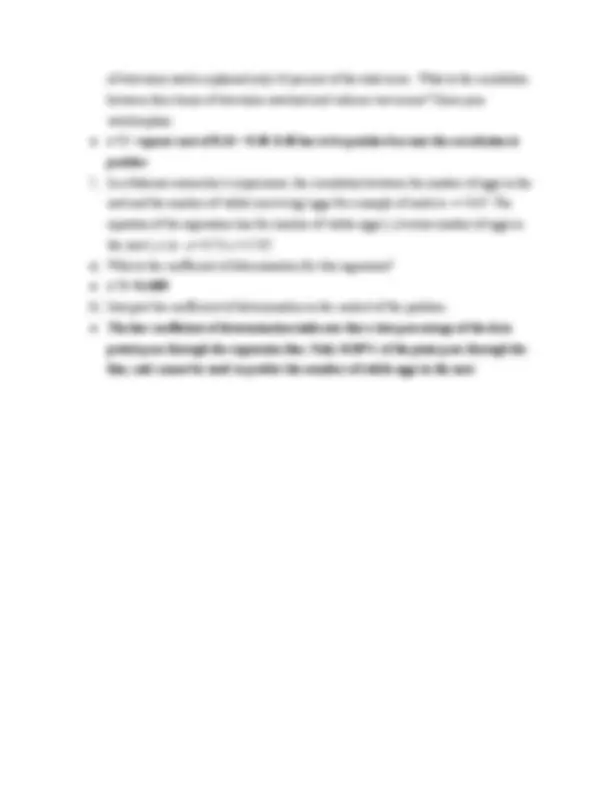
1. A random sample of patients who attended a clinic was selected. The age of the patient
(years) and the number of days since the last visit were collected and are displayed in the
figure below. The least-squares regression line for predicting number of days since the
last visit from the age of the patient is 𝑦𝑦� = 600.08 – 8.69x.
a)Interpret the slope in the context of the problem.
●The slope of this line is -8.69. The slope of the line tells us the change in days
since the last visit for each year older a patient is on average.
b)Interpret the y-intercept in the context of the problem.
●The y-intercept is 600.08. The y-intercept tells us the point when the age of
the patients will be zero, while the days since the last visit is around 600.
c)What is the predicted number of days since the last visit to the clinic for a 50-year-old
patient?
●600.8+ (-8.69)(50)=165 days.
d)What is the predicted age of a patient when the number of days since the last visit to
the clinic is 200 days?
●46 year old patient.
2. Consider a large number of countries around the world. There is a positive correlation
between the number of cell phones per person x and the average life expectancy y. Does
this mean that we could increase the life expectancy in Rwanda by shipping cell phones
to that country?
●No, the positive correlation just shows us that richer countries have both more cell
phones per person and a higher life expectancy.
3. A least-squares regression line is not just any line drawn through the points of a scatter
plot. What is special about a least-squares regression line?
●It produces a regression line, or least squares prediction equation. Minimizing the
sum of the squared vertical distances of the data points from the line.
4. A social scientist wants to use subjects’ number of hours of television watched to predict
their score on a test of propensity to violence. Subjects who watch more television do
tend to get higher scores on the test. But regressing their violence test score on their hours










